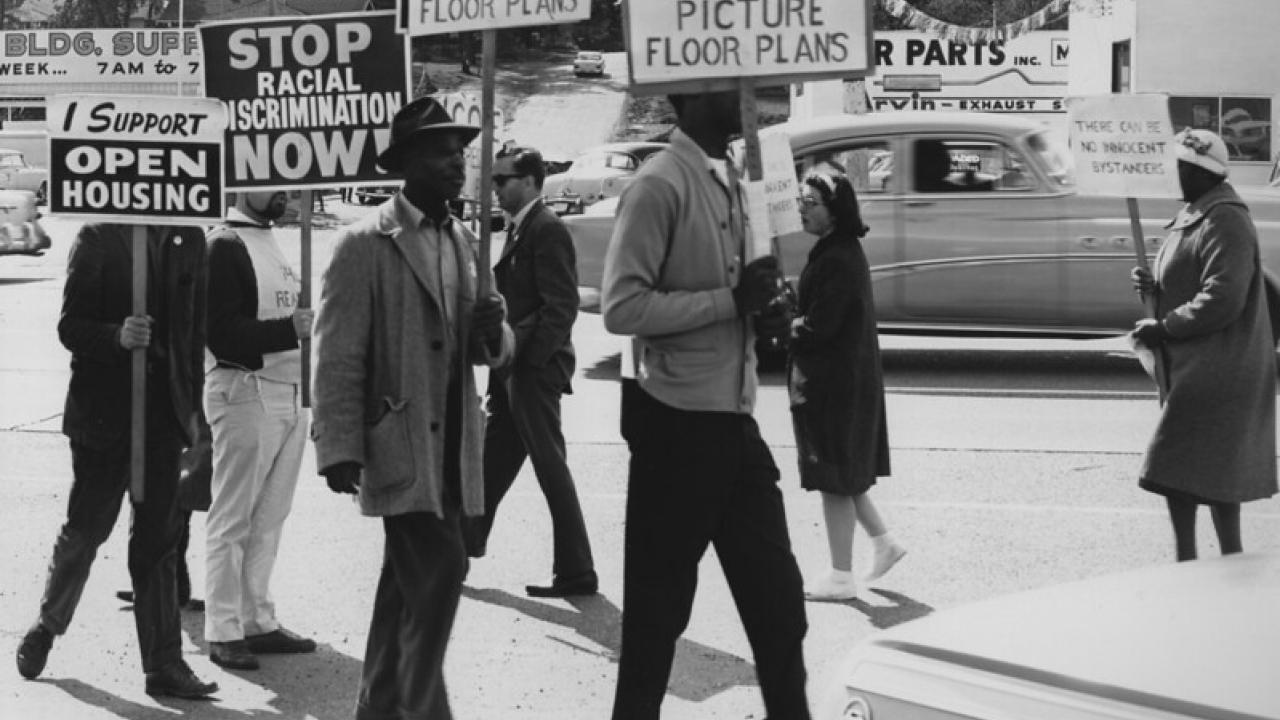
Redlining
Why has the term ‘redlining’ been in the news, and what are its connections to social, environmental and climate justice issues? Beginning in the 1930s, redlining was an official practice by federal agencies and banks that for decades restricted home loans primarily to white Americans. Today, a good deal of the differences in Americans’ economic, social, health, and environmental well-being is connected to discriminatory housing and urban planning practices that stretched throughout the twentieth century.
Teaching ideas (see page 7 of the Current Context issue for grade-specific ideas and resources, as well as HSS Framework alignment)
What is striking about redlining is just how many aspects of peoples’ lives are impacted by housing discrimination. At a minimum, a person’s health, social interconnectedness, and financial security are all tied to housing, and it is therefore relevant to study redlining across the many history-social science high school classrooms. While a study of the Civil Rights Movement that overturned many of the legal practices associated with housing discrimination fits particularly well in 11th grade U.S. history and government classrooms, the learning goes deeper if geography and economic principles are also applied. Moreover, ethnic studies practices can provide students with a more nuanced understanding of the structural injustices and systemic racism that permeate this nation’s history and continue to shape present-day realities. Perhaps you are already familiar with the Ethnic Studies Praxis Story Plot, but if you are not, the information below is meant to introduce you to it and examine how it can relate to the topic of redlining.
Ethnic studies education is meant to represent and serve “the unique needs of marginalized communities, those that are often racially, ethnically and linguistically diverse.” Ethnic studies classrooms center the experience and history of the local community and in doing so these classrooms prioritize this local context as the means by which students learn, organize, and take action. Scholars developed the Ethnic Studies Praxis Story Plot (ESPSP) in the process of working through folktales and other stories with students, recognizing that the characters’ struggles, positions of power, and acts of resistance all have meaning and relevance in students’ lives and communities. According to scholars, the ESPSP “urges teachers to demonstrate how the stories students read can be applied to their lived realities, developing students’ abilities to write and identify the underlying assumptions and dominant narratives these stories proffer.” (Curammeng, Lopez, and Tintiangco-Cubales, 2016)
As students examine the Ethnic Studies Praxis Story Plot, you can encourage them to think about a familiar book or movie (that centers race) and how key events and turning points in the story could be mapped out along the ESPSP. You may want to choose a well-known story and chart it on the story plot as a whole class. Perhaps the story of Rosa Parks’ resistance to discriminatory busing laws in Montgomery, Alabama in 1955.
After reading the Current Context on redlining, students can work in groups to identify what they see as the primary problem that needs to be addressed. (The example below identifies environmental racism as it relates to housing as the primary problem). Students can then go on to describe the next three points on the story plot: oppressive action; tensions and trauma; and taking action, resistance and healing. Students should cite specific evidence for each of these three points (for instance, the oppressive action in the example below is the practice of redlining itself, as well as the restrictive covenants on white-owned homes). A larger class discussion at this point may be helpful, with different groups explaining their choices. The final step is to identify the resistance and revolution stage, a step that enables students to make direct connections to their own communities and lives and how they may take action to achieve justice.
| Story Plot Point | Questions to Pose | Evidence-Based Answer |
| Expose the problem | What is the problem that is being uncovered? Who is involved? What are the power relationships between those involved? | People of color in the United States, on average, live in less healthy environments than whites. |
| Oppressive Action | What is the Context of the Problem? What actions, events, and/or treatment, show conflict and oppression? Is the root of the problem foreshadowed? | Redlining practices by banks and federal agencies, as well as restrictive covenants on white-owned homes that kept nonwhite residents from purchasing homes in the healthier, higher-valued neighborhoods. |
| Tension and Trauma | What is the pinnacle or climax of the tension? What event shows the most conflict and struggle? What happens that makes the problem become unbearable and causes trauma? | Civil rights activists in the mid twentieth century sought freedom of many kinds, including freedom to live in healthy homes and neighborhoods. Consistent white resistance to integrated neighborhoods forced a legal reckoning in the 1960s when activists successfully demanded laws to protect against housing discrimination. |
| Taking Action, Resistance and Healing | What happens after the trauma? Who is affected by the trauma? What actions are taken to resist the trauma or heal from the trauma? How does the action get at the root of the problem? | Community-led efforts, in partnership with cities (in places like Oakland and Cleveland), are examples of taking action, resistance and healing. |
| Resistance and Revolution | What changes as a result of the story? What can we learn from the story? How the problem addressed in the story? What does the story tell us about ourselves? |
(best completed by each student/student group) |
Do you have ideas and suggestions for using the Ethnic Studies Praxis Story Plot? Please share them with us at chssp@ucdavis.edu
Image: Fair Housing protest in Lake City, 1964. Seattle Municipal Archives https://www.flickr.com/photos/seattlemunicipalarchives/44274353585
